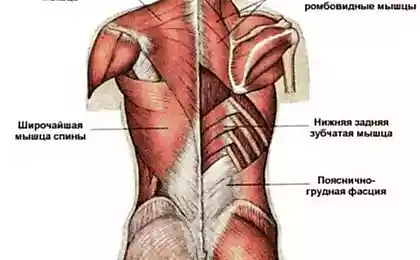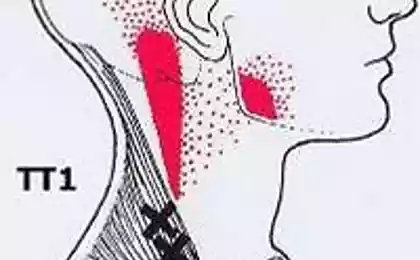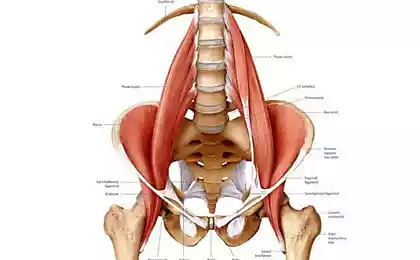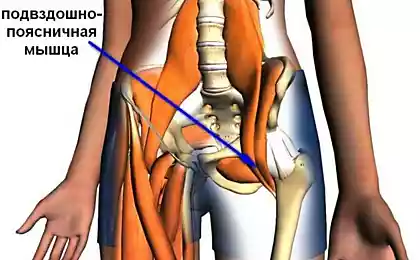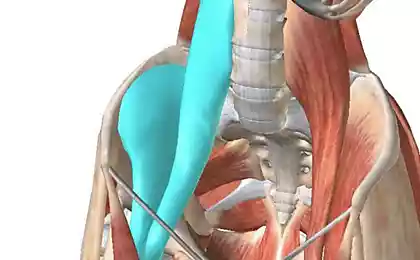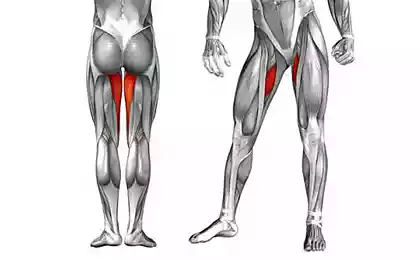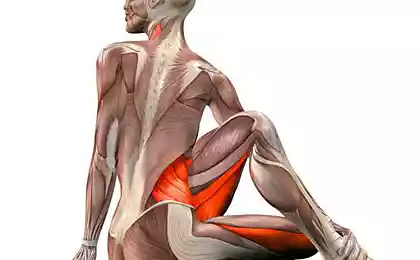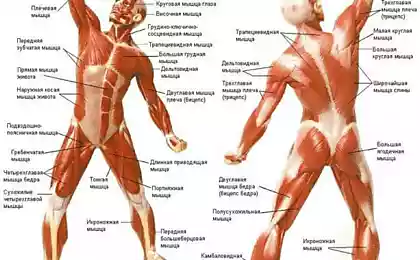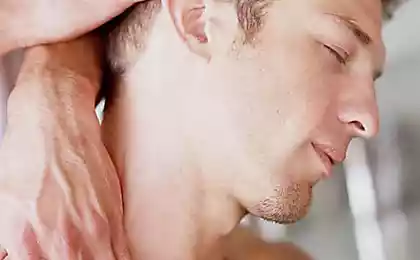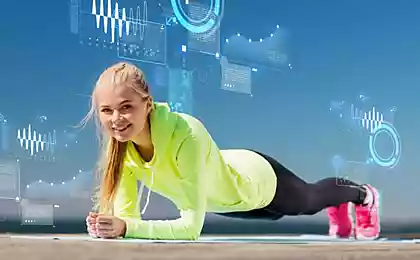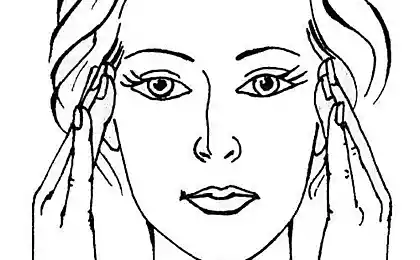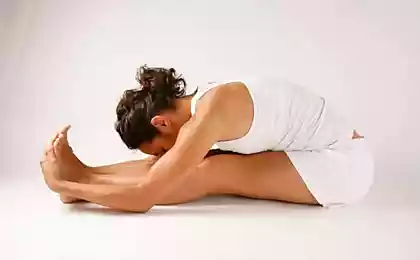236
The best exercises for the lumbar muscle (soul muscles)
Deep awareness of your bodywhich we develop through exercise, the most important tool for relaxing the lower back. And releasing the lumbar muscle will bring freedom, lightness and structural integrity to your practice.
At first, it can be difficult to achieve lumbar muscle sensitivity. It is located deep in the body and performs the usual patterns of holding and fixing our body. We can also say that the lumbar muscle is deeply connected with our emotions.
The lumbar muscle can be reached with attention, patience and perseverance. The first key is awareness. By directing your attention, like the beam of a flashlight illuminating objects in a dark room, you can gradually realize and characterize all the sensations of your body.
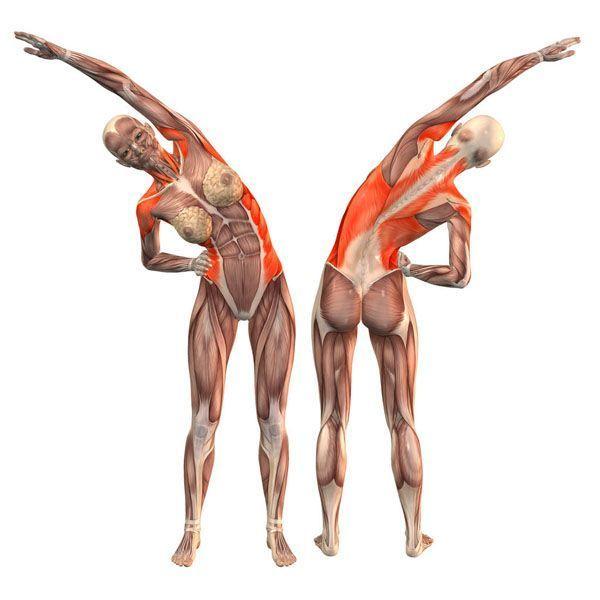
Constructive attitude of rest
There is a great position for relaxing the lower back, in it you do not need to show muscle activity, gravity will do everything for you. To adopt a constructive attitude of peace:
Active stretching in the prone position
Once you understand the position of the skeleton and the internal sensations inherent in the relaxation of the lumbar muscle, you can move on to a more active elongation of this muscle.
Now you can stretch the left side of the waist.
To increase the sprain, push your right foot to your right hand, as if you were hitting your foot into the sky. At the same time, resist the push of the leg with the girth of your arms. In a few minutes, change sides.
Stop the exercise if you feel pain or tension in the lower back. Instead, return to a constructive resting position and rest, allowing gravity to relax your lumbar muscle again.

Maximum stretching
One of the best options for stretching the lumbar muscle Dove pose and her options.
To enter the pose, start on all fours.
This position stretches the left part of the lumbar muscle. Continuing to lengthen your back through your left leg, make sure the pelvis does not turn and looks forward at right angles. If the pelvis turns, you will lose stretching of the lumbar, may even appear compression or torsion in the lumbar region.
If you stretch correctly, tension in the lumbar region should not occur. The sensation of release and stretching should occur where the lumbar muscle crosses the thigh, and you should feel the pull upwards in front and behind the trunk.
Sitting poses
Now you know how relaxation and lengthening of the lumbar muscle feels, and we use a simple cross-legged position to clarify the proper use of the lumbar muscle in sitting exercises.
Pay attention to how your weight goes through the pelvis to the floor. Where is more weight: behind the sciatic bones or in front of them? If you feel that the weight goes directly to the bones, paraphrase the question. Do you have more weight on the front of the bones or on the back? Lift your sciatic bones and push your buttocks back so that when you sit down again, the weight falls more firmly on the front of the sciatic bones.
To properly align the pelvis, you may need to raise the sciatic bones by placing a folded blanket under the buttocks. When you build up the posture, decomposing all the props, you will find yourself on the front of the sciatic bones with knees below the hip joints. This relationship between the knees and hips is important for all sitting positions, as it allows the pelvis to open, and this disclosure allows you to release tension through the legs.
When your pelvis is stable and the skeletal structure is correctly aligned, a sitting position is given effortlessly.
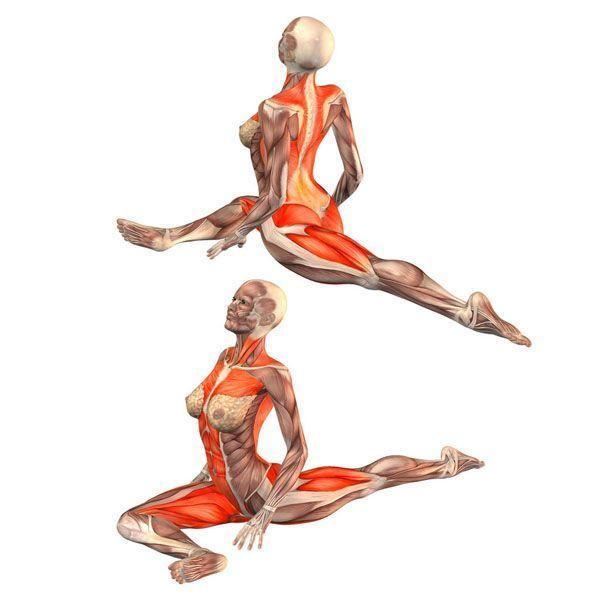
Relaxation while standingMountain poseStand so that your feet are directly under the hip joints and watch your feelings.
Is your pelvis stable? Is the pelvic arch parallel to the floor? Is the weight equal on both legs?
If the answer is yes, your lower back should feel relaxed and you should feel gravity transferring weight through your bones to the floor.
If you do not feel that your pelvis is stable and aligned, try to return to a constructive resting position and stretch the lower back in the prone position. After a few minutes of relaxing your lower back and stabilizing your pelvis, return to the Mountain Pose and see if you feel more balanced.
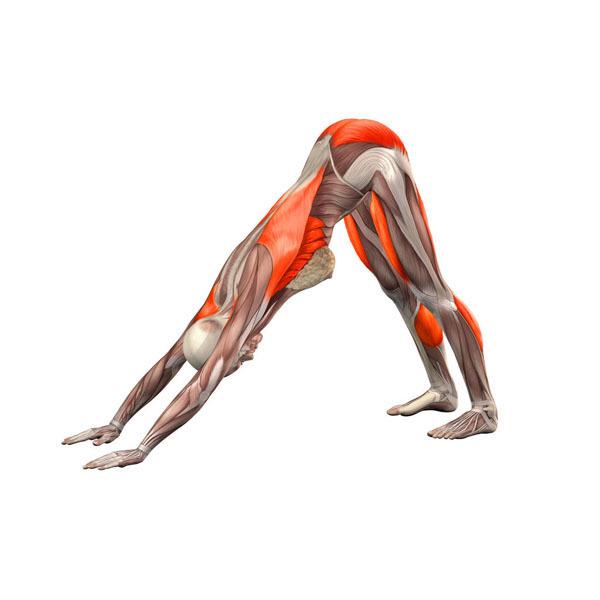
Tree pose
If you feel the same weight on both feet in the Mountain Pose, focus on the ankle sensations.
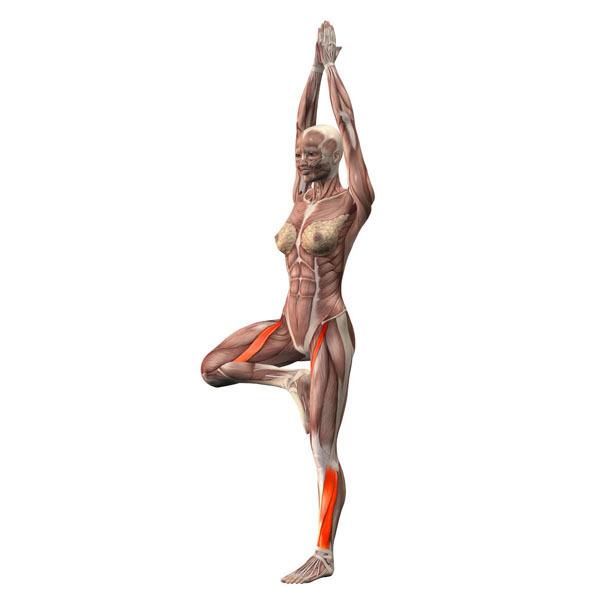
Moving from the Mountain Pose to the Tree Pose with the right adjustment means that you continue to feel the connection between your standing leg and your spine, even if you carry the weight on one leg and lift the other over the floor.
When you are ready, gradually transfer the weight from two legs to one right.
A common mistake in this exercise is to lean on the right thigh, which can cause the femoral ligaments to stretch on this side. Instead, give your weight directly through the bones of your leg, allowing the joint and right side of your lower back to remain relaxed.
When you’re able to give away weight through your right leg without piling on your right hip or blocking your right knee, you can start unrolling and lifting your left leg. If necessary, hold your hand against the wall to maintain balance.
Also interesting: How the invisible lumbar muscle affects the entire body
Stretching exercises for beginners
Source: yogaworld.ru/ 2014/07/psoas
At first, it can be difficult to achieve lumbar muscle sensitivity. It is located deep in the body and performs the usual patterns of holding and fixing our body. We can also say that the lumbar muscle is deeply connected with our emotions.
The lumbar muscle can be reached with attention, patience and perseverance. The first key is awareness. By directing your attention, like the beam of a flashlight illuminating objects in a dark room, you can gradually realize and characterize all the sensations of your body.

Constructive attitude of rest
There is a great position for relaxing the lower back, in it you do not need to show muscle activity, gravity will do everything for you. To adopt a constructive attitude of peace:
- lie on your back, bend your legs in your knees about 90 degrees, put your feet on the floor from 30-40 cm from the buttocks;
- Do not reduce or increase the natural curves of your back - in the lower back and neck.
- Place relaxed hands on the chest, on the pelvis or on the floor.
Active stretching in the prone position
Once you understand the position of the skeleton and the internal sensations inherent in the relaxation of the lumbar muscle, you can move on to a more active elongation of this muscle.
- Start with a constructive resting position with bent legs, point your right thigh toward your chest.
- Gently press your right thigh against your torso.
- Be careful and do not turn the pelvis up from the floor while moving the right leg, the pelvis should be on the same level with the trunk.
Now you can stretch the left side of the waist.
- Step your left foot a little further from your hips.
- When the leg lengthens, keep your attention in front of the left hip joint, releasing all the tension of the lower back that you notice there.
- When you begin to feel the lengthening of the lumbar muscle, follow the sensations along the entire length of the muscle upwards until it attaches to the 12th thoracic vertebra, which is behind your solar plexus.
To increase the sprain, push your right foot to your right hand, as if you were hitting your foot into the sky. At the same time, resist the push of the leg with the girth of your arms. In a few minutes, change sides.
Stop the exercise if you feel pain or tension in the lower back. Instead, return to a constructive resting position and rest, allowing gravity to relax your lumbar muscle again.

Maximum stretching
One of the best options for stretching the lumbar muscle Dove pose and her options.
- One leg you bend in front of you, the second behind, the pelvis does not change its position - so you share the stretch in the lumbar muscle and the iliac muscle, which is attached to the back leg.
To enter the pose, start on all fours.
- Bring your right knee forward in front of your hands. In this case, we release and twist the right thigh in the joint, and the right buttock is on the floor.
- At the same time, stretch your left leg behind you. Make sure the hips are at the same level and the pelvis is turned forward.
- If necessary, place a boulster or folded blanket under the right sciatic bone to support the pelvis at the desired level.
This position stretches the left part of the lumbar muscle. Continuing to lengthen your back through your left leg, make sure the pelvis does not turn and looks forward at right angles. If the pelvis turns, you will lose stretching of the lumbar, may even appear compression or torsion in the lumbar region.
If you stretch correctly, tension in the lumbar region should not occur. The sensation of release and stretching should occur where the lumbar muscle crosses the thigh, and you should feel the pull upwards in front and behind the trunk.
Sitting poses
Now you know how relaxation and lengthening of the lumbar muscle feels, and we use a simple cross-legged position to clarify the proper use of the lumbar muscle in sitting exercises.
- Sit on a folded blanket so that the feet and lower legs are outside the blanket.
- Bend your right leg and place your heel close to your groin.
- Similarly, bend your left leg and place your heel next to your right shin.
Pay attention to how your weight goes through the pelvis to the floor. Where is more weight: behind the sciatic bones or in front of them? If you feel that the weight goes directly to the bones, paraphrase the question. Do you have more weight on the front of the bones or on the back? Lift your sciatic bones and push your buttocks back so that when you sit down again, the weight falls more firmly on the front of the sciatic bones.
To properly align the pelvis, you may need to raise the sciatic bones by placing a folded blanket under the buttocks. When you build up the posture, decomposing all the props, you will find yourself on the front of the sciatic bones with knees below the hip joints. This relationship between the knees and hips is important for all sitting positions, as it allows the pelvis to open, and this disclosure allows you to release tension through the legs.
When your pelvis is stable and the skeletal structure is correctly aligned, a sitting position is given effortlessly.

Relaxation while standingMountain poseStand so that your feet are directly under the hip joints and watch your feelings.
Is your pelvis stable? Is the pelvic arch parallel to the floor? Is the weight equal on both legs?
If the answer is yes, your lower back should feel relaxed and you should feel gravity transferring weight through your bones to the floor.
If you do not feel that your pelvis is stable and aligned, try to return to a constructive resting position and stretch the lower back in the prone position. After a few minutes of relaxing your lower back and stabilizing your pelvis, return to the Mountain Pose and see if you feel more balanced.

Tree pose
If you feel the same weight on both feet in the Mountain Pose, focus on the ankle sensations.
- Gently shift your weight back and forth through the ankle joints until you find the position in which they are most relaxed.

Moving from the Mountain Pose to the Tree Pose with the right adjustment means that you continue to feel the connection between your standing leg and your spine, even if you carry the weight on one leg and lift the other over the floor.
When you are ready, gradually transfer the weight from two legs to one right.
A common mistake in this exercise is to lean on the right thigh, which can cause the femoral ligaments to stretch on this side. Instead, give your weight directly through the bones of your leg, allowing the joint and right side of your lower back to remain relaxed.
When you’re able to give away weight through your right leg without piling on your right hip or blocking your right knee, you can start unrolling and lifting your left leg. If necessary, hold your hand against the wall to maintain balance.
Also interesting: How the invisible lumbar muscle affects the entire body
Stretching exercises for beginners
Source: yogaworld.ru/ 2014/07/psoas
